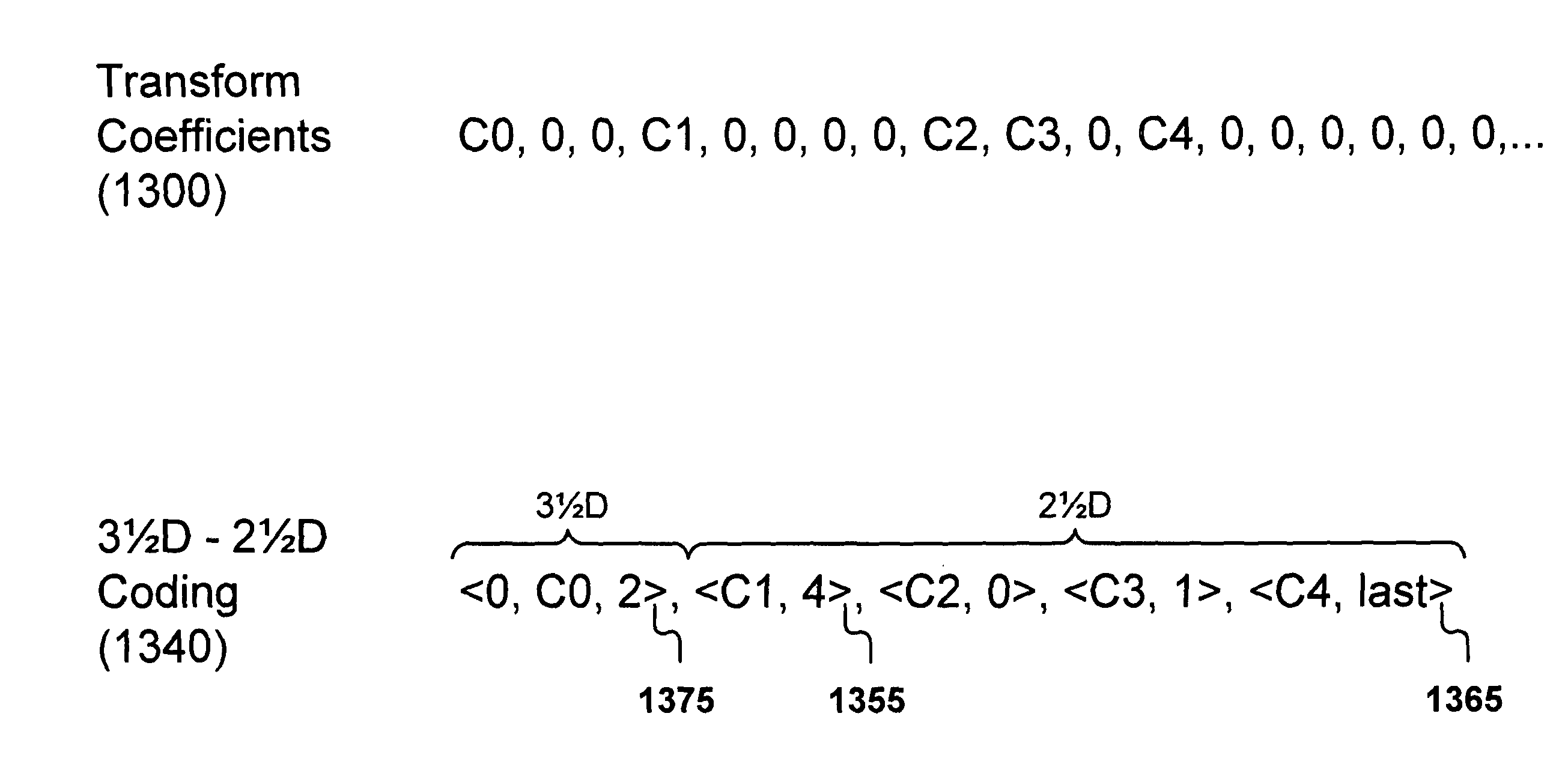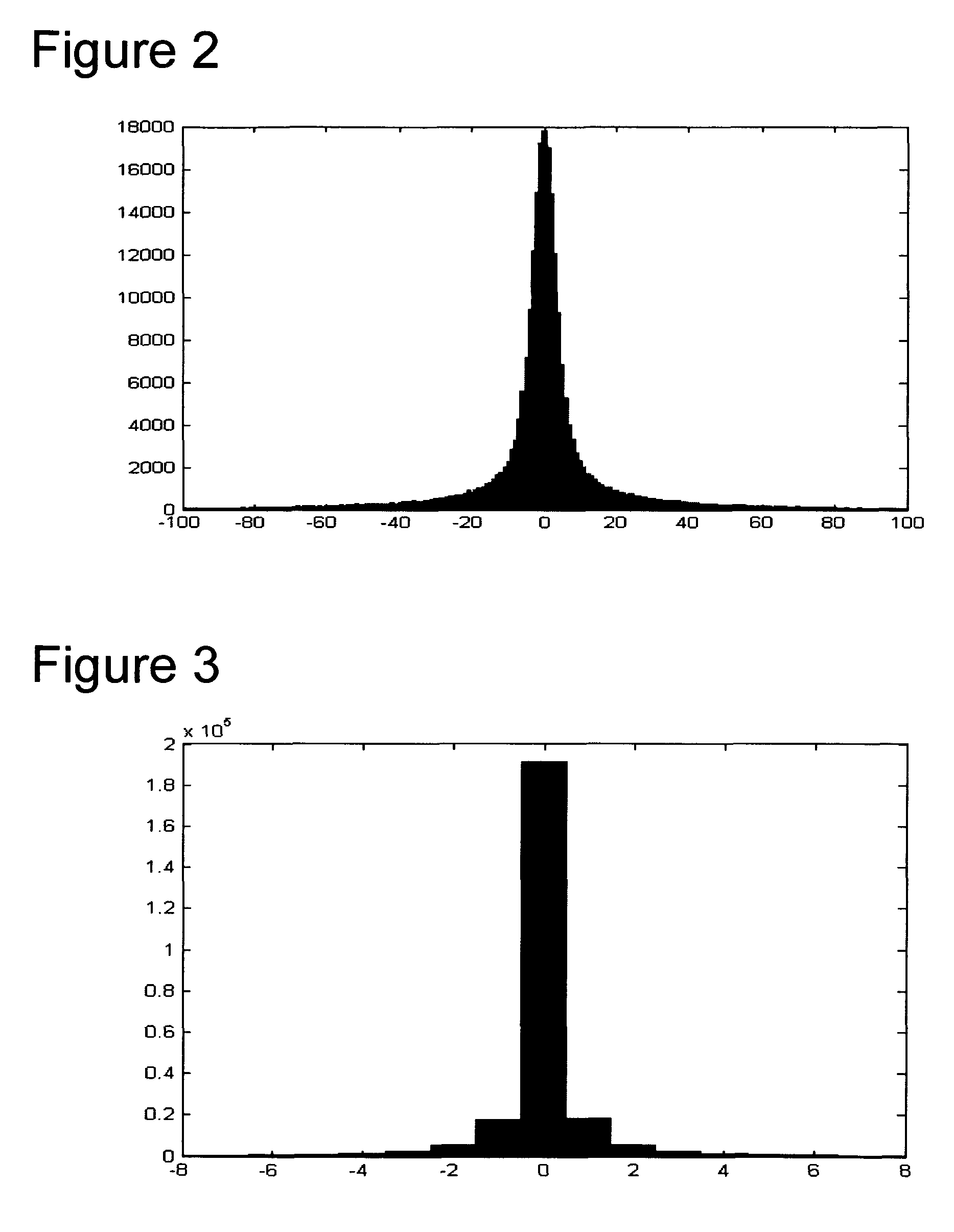Efficient coding and decoding of transform blocks
a transform block and coding technology, applied in the field of efficient coding and decoding of transform blocks, can solve the problems of increasing the size of the code table, requiring the sending of an entire additional symbol, and increasing the cost of the bitstream, so as to achieve the effect of compressing the transform coefficien
- Summary
- Abstract
- Description
- Claims
- Application Information
AI Technical Summary
Benefits of technology
Problems solved by technology
Method used
Image
Examples
implementation example
[0136]3.6 Index Implementation Example
[0137]The first Index has an alphabet size of 12. In one implementation, five Huffman tables are available for this symbol, which is defined as FirstIndex=a+2b+4 c, where the symbol is and a and b are 0 or 1, and c can take on values 0, 1 or 2. One implementation of code word lengths for the twelve symbols for each of the tables is given below. Standard Huffman code construction procedures may, in one implementation, be applied to derive these sets of prefix codewords:
[0138]Table 1: 5,6,7,7,5,3,5,1,5,4,5,3
[0139]Table 2: 4,5,6,6,4,3,5,2,3,3,5,3
[0140]Table 3: 2,3,7,7,5,3,7,3,3,3,7,4
[0141]Table 4: 3,2,7,5,5,3,7,3,5,3,6,3
[0142]Table 5: 3,1,7,4,7,3,8,4,7,4,8,5
[0143]Subsequent Index symbols have an alphabet size of 6. In one implementation, Index is defined as Index=a+2b, where the symbol is and a is Boolean and b can take on values of 0, 1 or 2. Four Huffman tables are defined for Index, as shown below:
[0144]Table 1: 1,5,3,5,2,4
[0145]Table 2: 2,4,2...
PUM
 Login to View More
Login to View More Abstract
Description
Claims
Application Information
 Login to View More
Login to View More - R&D
- Intellectual Property
- Life Sciences
- Materials
- Tech Scout
- Unparalleled Data Quality
- Higher Quality Content
- 60% Fewer Hallucinations
Browse by: Latest US Patents, China's latest patents, Technical Efficacy Thesaurus, Application Domain, Technology Topic, Popular Technical Reports.
© 2025 PatSnap. All rights reserved.Legal|Privacy policy|Modern Slavery Act Transparency Statement|Sitemap|About US| Contact US: help@patsnap.com



